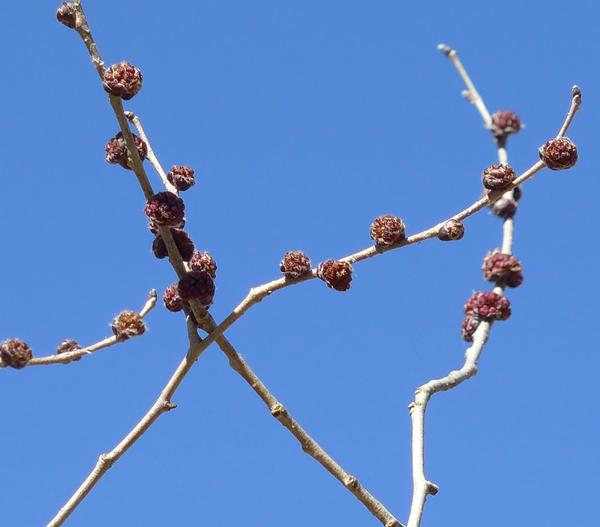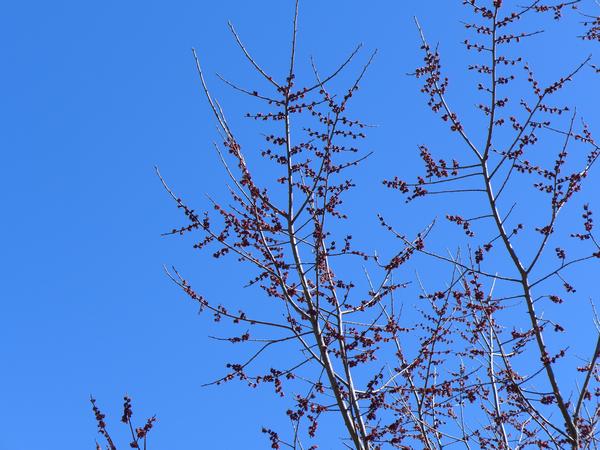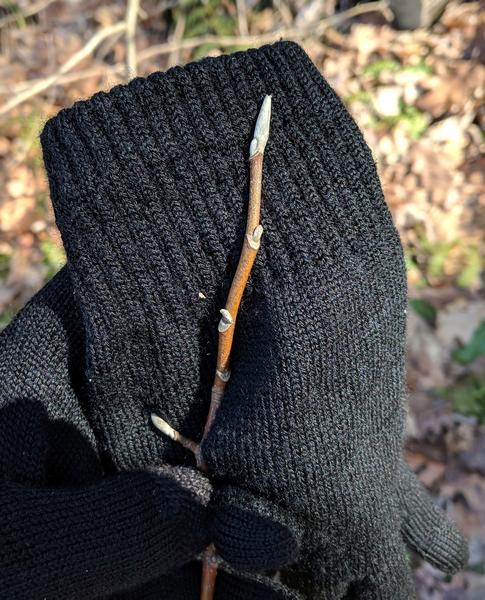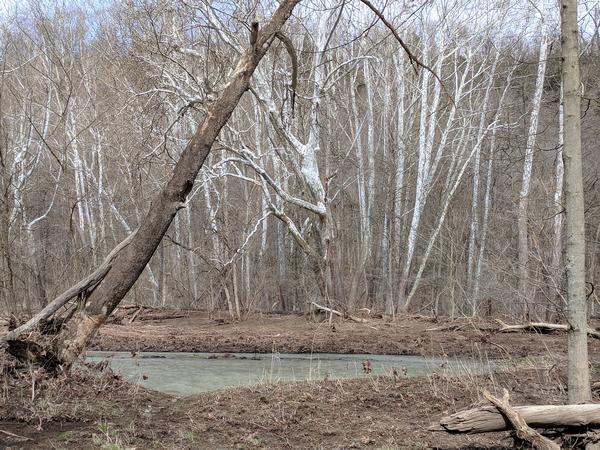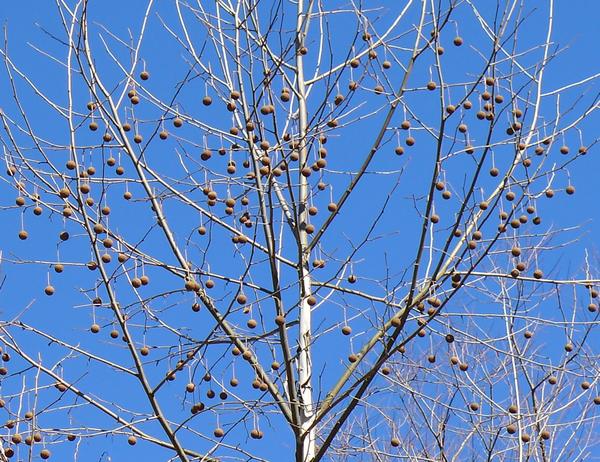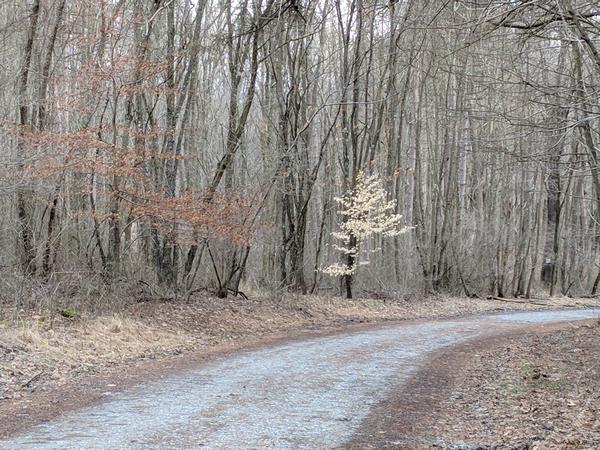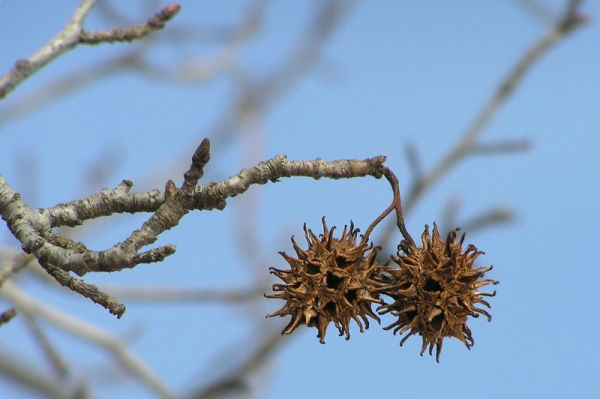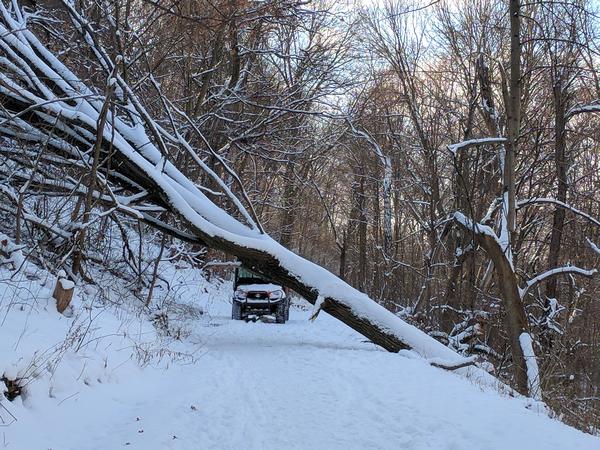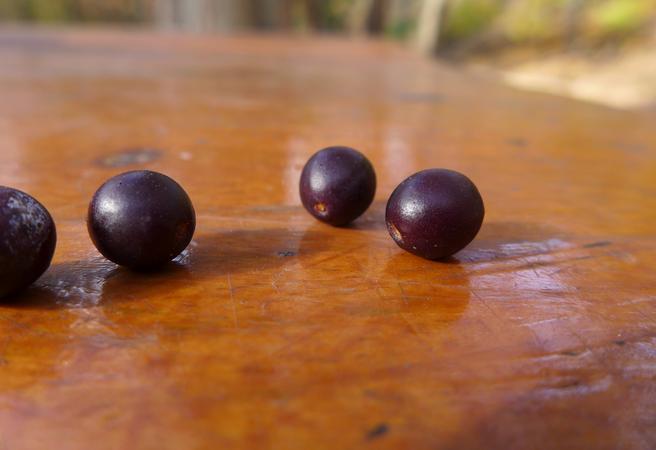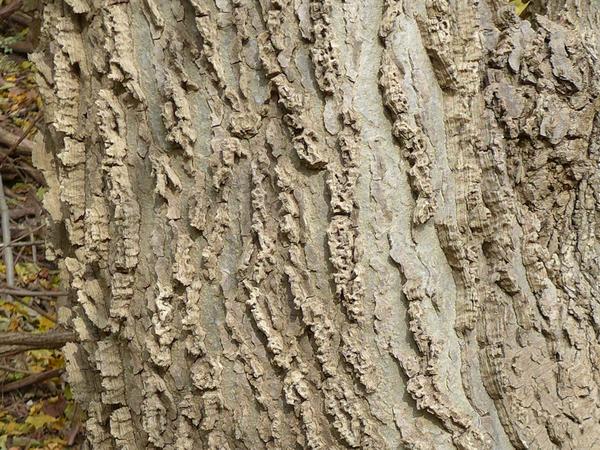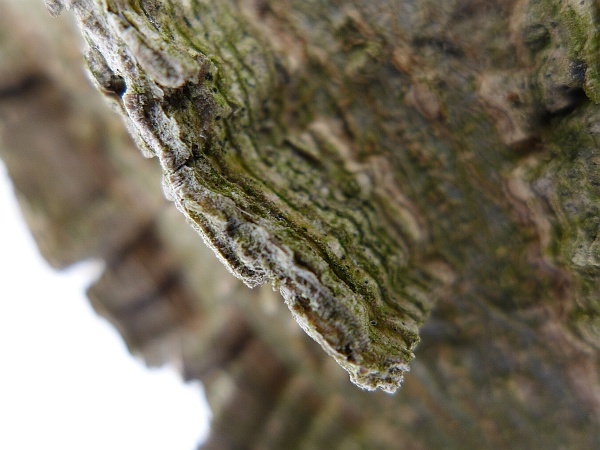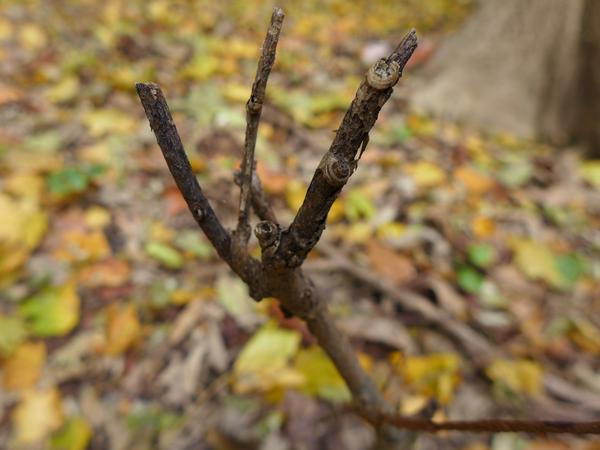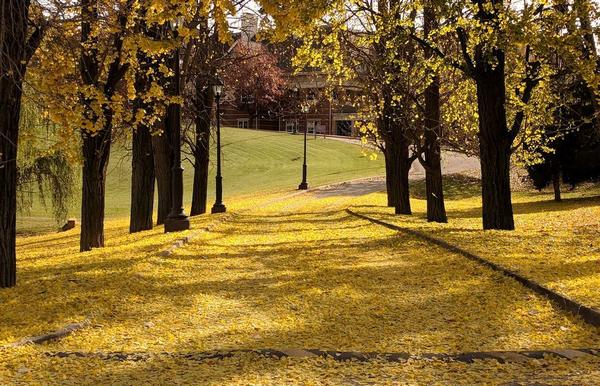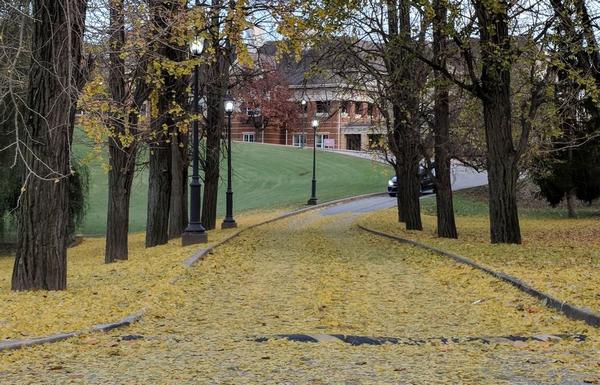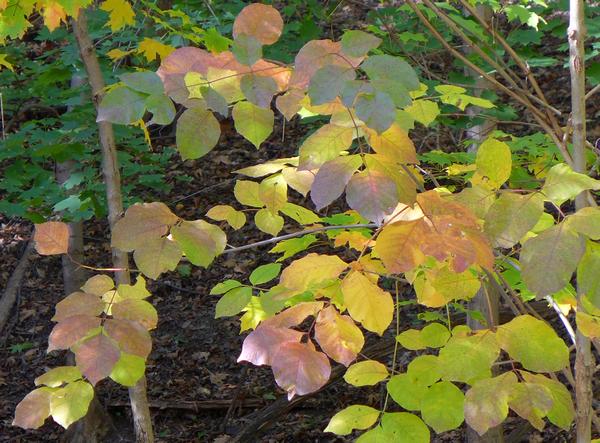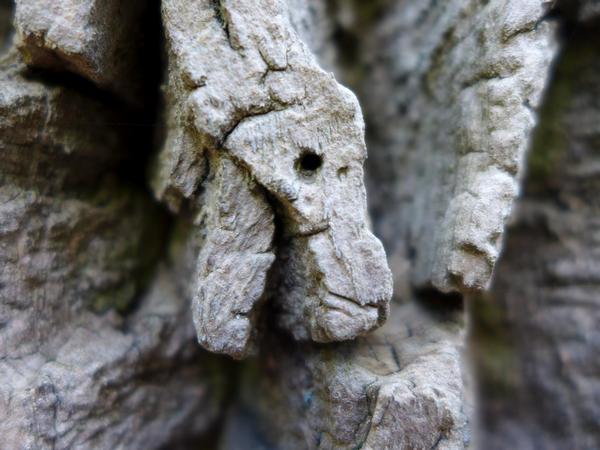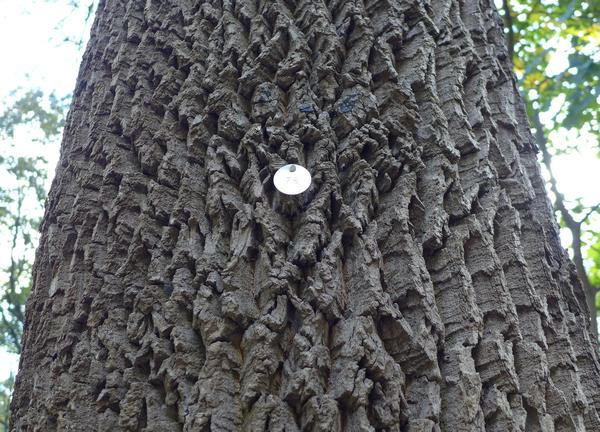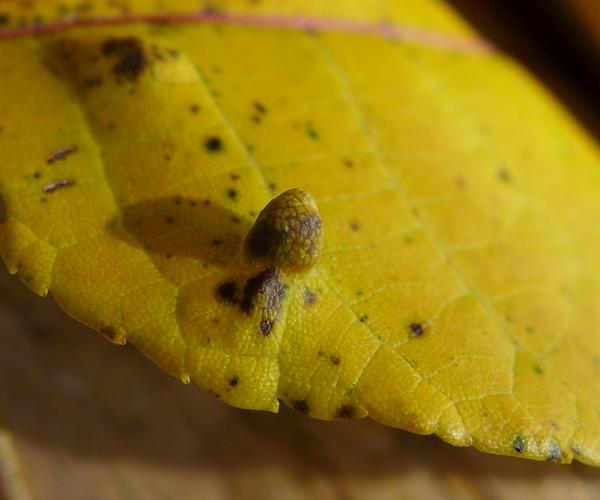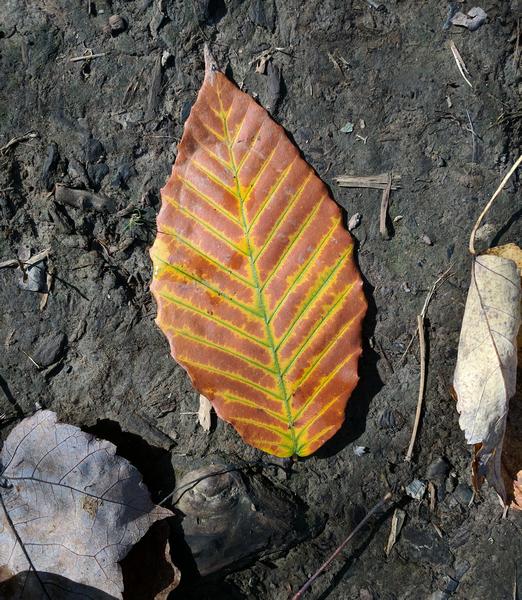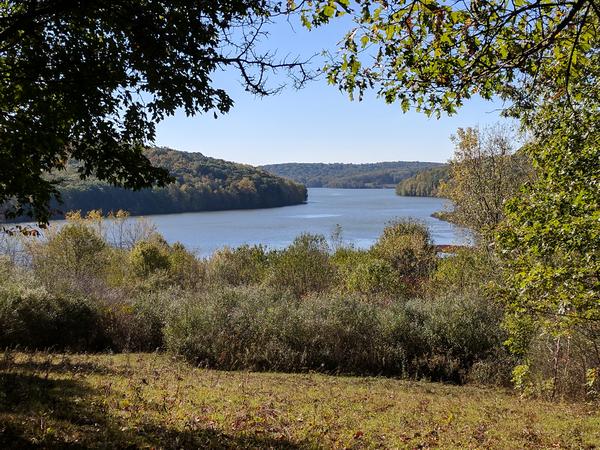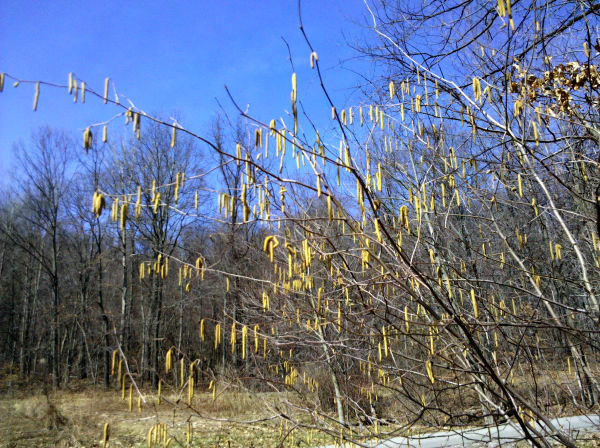
Every year I see these yellow catkins in March and every year I forget their name. But this year will be different. I’m identifying them ahead of time as American hazelnuts (Corylus americana).
The catkins are the male flowers, so full of pollen that your fingers become dusty yellow if you touch them. They swing and flutter in the breeze to disperse their pollen to …
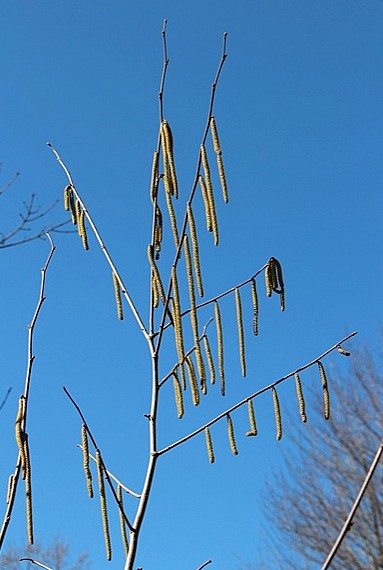
… to fertilize this tiny flower. The red female flowers, located on the branches, are easy to overlook because they’re so small. They don’t stand out because they don’t need to attract insects for pollination.
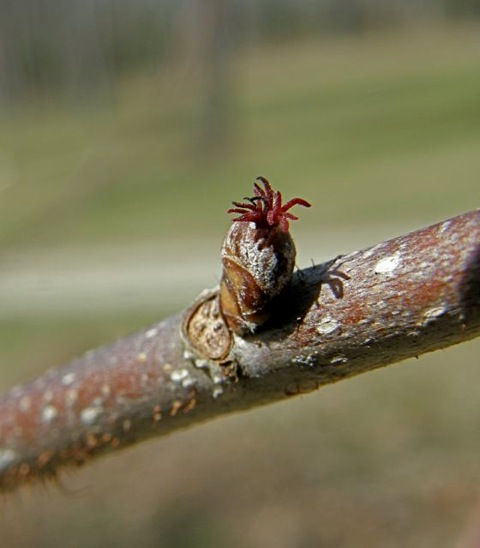
Here are some additional tips on identifying American hazelnut:
- This nut-bearing plant is often cultivated. It produces more nuts in full sun but it grows in the shade as well.
- American hazelnut trunks grow in clumps like a shrub.
- The clumps are on average about 10 feet tall.
- Its long yellow catkins indicate it’s in the birch family.
- The bark is smooth and speckled.
- Many of the catkins sprout alone instead of in bunches.
- The catkins are as long — or longer — than my fingers.
- The leaf buds are alternate on the branches.
- The female flowers bloom from the leaf buds before the leaves appear.
Because it’s often cultivated, you’ll find American hazelnut along trails and in easy to reach places. Its nuts provide food for wildlife.
(photos credits: top photo by Kate St. John, closeups by Marcy Cunkelman)
